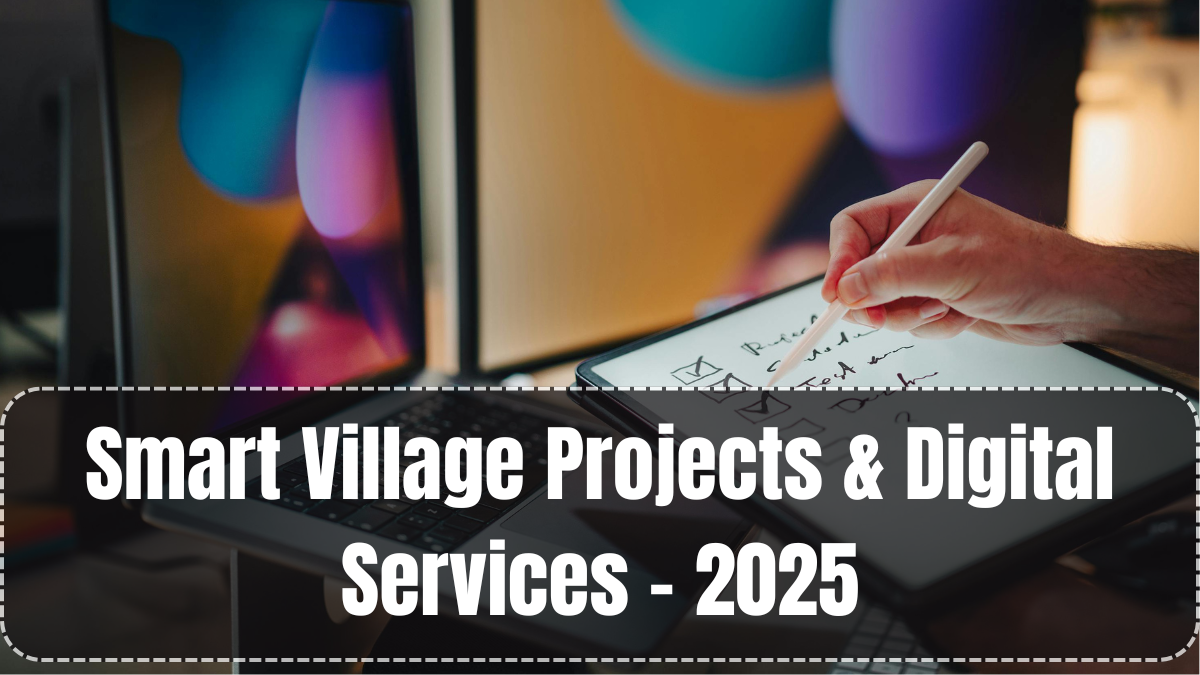India’s villages are no longer just agricultural hubs—they’re fast transforming into digitally connected, self-sufficient communities. In 2025, the Smart Village Plans 2025 are turning rural regions into models of sustainable development, digital governance, and modern public services. With the central and state governments heavily investing in rural tech infrastructure, Zilla Parishads and Panchayats are implementing smart solutions across thousands of villages.
Here’s an in-depth look at how Smart Village projects are reshaping rural India in 2025.

What Are Smart Villages?
Smart Villages are rural settlements that leverage digital technology, clean energy, internet connectivity, and public service delivery models to improve the quality of life. Unlike urban-centric smart city projects, smart villages focus on:
-
E-governance and transparency
-
Digital health and education
-
Sustainable agriculture
-
Clean water and energy access
-
Skill development and entrepreneurship
The Smart Village Plans 2025 aim to create equitable growth, bridging the rural-urban divide through modern solutions tailored to village needs.
Core Components of Smart Village Projects in 2025
The Smart Village model in 2025 is based on a holistic 6-pillar approach:
-
Digital Infrastructure
-
High-speed internet via BharatNet
-
Free Wi-Fi zones at Panchayat Bhawans
-
Solar-powered digital kiosks
-
-
E-Governance Services
-
Online birth/death certificates
-
RTI filing and grievance redressal portals
-
Property and land records through DigiGaon platforms
-
-
Smart Education
-
Digital classrooms with projectors and tablets
-
Live online classes in regional languages
-
Free access to e-libraries and government portals like SWAYAM
-
-
Smart Healthcare
-
Telemedicine through eSanjeevani
-
Health monitoring via AI-based kiosks
-
QR-coded health records stored digitally
-
-
Renewable Energy Integration
-
Solar panels on Gram Panchayat buildings
-
Smart solar street lights
-
Biogas plants in farming households
-
-
Skill & Livelihood Programs
-
Digital skill training under PMKVY 4.0
-
SHG e-commerce via GeM and ONDC platforms
-
Online job application and tracking centers
-
These initiatives under Smart Village Plans 2025 empower rural residents to become digitally literate, financially independent, and socially connected.
State-Wise Implementation of Smart Village Projects
Many states are leading the smart village movement through innovative state-specific schemes:
| State | Flagship Program Name | Notable Features |
|---|---|---|
| Gujarat | Narmada Smart Gram Yojana | Solar power, smart irrigation, CCTV |
| Maharashtra | MahaGramNet | Internet, tele-education, mobile banking |
| Telangana | Digital Panchayat Scheme | 100% e-governance, biometric systems |
| Tamil Nadu | e-Village Project | Smart classrooms, virtual doctor clinics |
| Madhya Pradesh | Adarsh Gram Abhiyan | Women-led self-help tech groups |
| Odisha | Mo Village Smart Services | Paperless Panchayat and mobile health vans |
The Zilla Parishads and Gram Sabhas are the main administrative bodies implementing these schemes with support from the Ministry of Rural Development and Digital India Corporation.
Benefits of Smart Village Plans 2025 for Rural India
Smart villages are yielding measurable benefits for local communities:
-
Reduction in migration due to better employment and facilities
-
Improved literacy and digital inclusion
-
Increased access to banking, insurance, and welfare schemes
-
Real-time governance through e-Panchayat and dashboards
-
Safer and cleaner environments via sanitation tech and smart lighting
Villages are evolving from infrastructure-starved to digitally inclusive ecosystems.
Role of Technology and Startups in Smart Villages
In 2025, technology startups and CSR projects are fueling rural digitization:
-
Agri-tech startups offer sensor-based irrigation and crop advisory apps
-
Rural fintechs like Jai Kisan and Spice Money are expanding digital banking
-
Ed-tech tools like Diksha and Toppr Rural are building student access
-
IoT and AI are being used for monitoring water usage, energy consumption, and even livestock health
The Smart Village Plans 2025 encourage public-private partnerships for innovation in education, commerce, and agriculture.
FAQs
What is the main objective of Smart Village Plans 2025?
The goal is to digitally transform rural communities with better governance, education, health, and employment opportunities using technology.
Who implements Smart Village projects?
Zilla Parishads and Gram Panchayats, in coordination with central and state government schemes like Digital India, implement these plans on the ground.
Are Smart Village services free for villagers?
Most services like Wi-Fi zones, digital literacy, telemedicine, and e-governance portals are offered free of cost to ensure inclusive participation.
How is the internet being provided to remote villages?
High-speed broadband is delivered through BharatNet fiber-optic networks, with last-mile access supported by Wi-Fi hotspots and digital kiosks.
Can Smart Villages help reduce rural unemployment?
Yes. Through skill training programs, SHG digital marketing, agri-tech adoption, and online job platforms, Smart Villages are boosting rural income and reducing migration.
Click here to know more.
